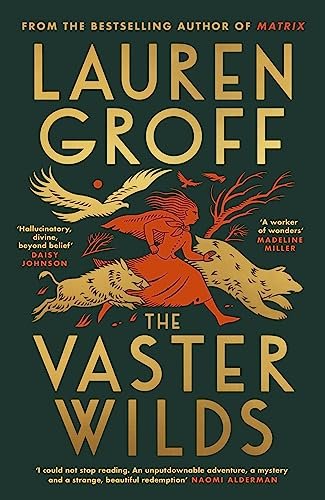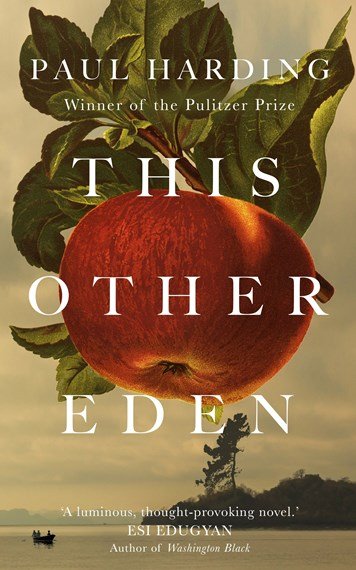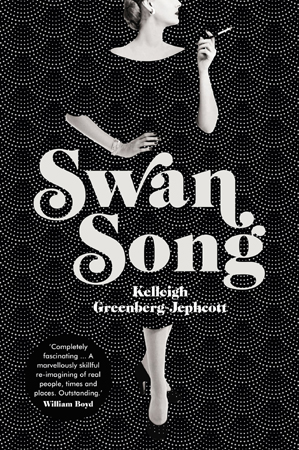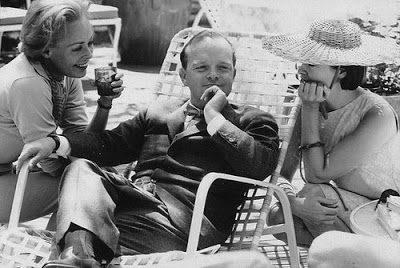At the centre of this story is Makatea, an extremely remote atoll in the Pacific Ocean. The mayor and its residents (who total less than a hundred people) are presented with a proposition that their island can become a base for a large company's seasteading plans. The novel begins with Powers' short reworking of the French Polynesian myth of Ta'aroa, the supreme creator god. I assume this is a myth which is known to the people of Makatea since it is a real island. This myth comes to have a new relevance to the present day – especially because of the reference to how humans multiplied so much that they came to inhabit all 7 levels of the world that Ta'aroa created – thus connecting to the novel's overarching story about civilisation's expansion into floating islands through seasteading.
However, there's much more going on in this novel and the connections between all the elements Powers presents aren't immediately obvious. It primarily follows four characters: Evie, a French Canadian oceanographer who prefers dwelling under water; Rafi, a black lover of literature from the south side of Chicago; Todd, a white tech geek from a once privileged background who has now made his own fortune; and Ina, an artist who resides on Makatea while raising her children. The narrative slides back and forth in time. There's the immediate concerns of Makatea as they come to a democratic decision about the island's future. However, Todd is also preoccupied with the knowledge that he's suffering from a degenerative illness and might not see his ambitious designs play out having amassed an enormous fortune creating a social media platform similar to Facebook called Playground.
It's notable that at one point during her underwater exploration Evie also thinks of the ocean floor as a playground because of the colour and variety of life found in this eco-system whose workings are little known or considered. The back stories of all these characters are explored alongside scenes set in the present. I loved the passages where Evie observes the wondrous workings and interactions of sea creatures. It's one of my favourite pastimes to watch nature programs – especially about ocean life – and to snorkel myself in the less colourful waters of the Mediterranean. So I also felt enraptured by the mystery and beauty with this vast area of the world that we have little access to. There's a wonderful moment when a huge manta ray passes over her and she engages in a kind of play with it. It's impactful how she experiences first hand the large scale damage to the environment because of pollution and individual suffering, but also how sea life builds itself around the detritus and wreckages left on the ocean floor.
My favourite sections of the novel concern Evie who struggles to establish her desire to work in oceanography because of the sexism she encounters but is able to get a break when an all-female team of scientists embark on an ocean expedition. Her desires are gradually revealed, not just for wanting to spend as much time in the ocean as possible but also for other women. It's moving how she and her husband come to reconcile their marriage more as a partnership where they each find fulfilment in their individual work and their love for their children so it's a much more complex portrayal of a relationship which isn't necessarily romantic. I also appreciated the way in which Ina comes to express herself as an artist and the emotional section where she presents a piece to Todd and Rafi thus revealing her perspective/inner life. Some analogies and descriptions came across as somewhat laboured to me such as a line where Ina's eyes are likened to the Pacific and a poem by Rafi is reproduced. The competitive nature and friendship break between Todd and Rafi comes to feel like the key to the whole novel.
The geeky side of me also enjoyed following the development of Rafi and Todd's friendship – primarily through playing games. I think Powers makes veiled references to the games Risk and Civilisation which I enjoy playing. I've never played the game Go which originated in China but I'm now curious to. It also tickled me realising that the satirical trading cards which Rafi witnessed becoming a fad at school must have been Garbage Pail Kids cards because I remember how popular they were at school when I was growing up. One of my most vivid memories is when I was around 9 years old opening a fresh pack during recess one day, accidentally dropping all my cards and watching in sorrow as a swarm of children grabbed them from beneath me and ran away. Anyway, I liked how Rafi doesn't just see the games he plays with Todd as a pastime but as a way of playing out life's drama similar to what he admires in novels. It's moving how Rafi develops a passion for the humanities in general and reading literature. He follows this despite the expectations placed upon him by his father in particular. The moment where he first visits a library and can't believe that he's able to take a book out for free is so touching. I was also very moved by the section which describes how his progress was impeded before everyone realised that he needs glasses.
As the members of the island come together to make a decision about proposals for its future development and use we see the various central characters coming together with Rafi as a teacher on the island and a now elderly Evie as a resident. Though I feel sympathy with Todd whose personality means he's a kind of outsider, I was less engaged by his sections. It's interesting how Powers describes in this interview with Barnes & Noble that he wanted to establish empathy for Todd despite this character being a tech bro. I was glad to hear what Powers has to say about the various things which inspired and informed him in writing this book. The layered meaning of the title and the novel's themes about playing to win vs playing to keep playing really come through as he discusses it. Also interesting that he thinks of “Overstory”, “Bewilderment” and “playground” as a kind of trilogy.
It's extremely compelling how the final sections of the novel seem to turn the entire story on its head. I had to read it a few times to wrap my head around what it means. It forces the reader to think back and question what has come before. I discuss more of my thoughts about the ending with spoilers in this video: https://www.youtube.com/watch?v=fSM4VZA7Fv0 Overall, I appreciated how Powers complexly develops the concepts of games and playing as something integral to life/development, but also as something where this upping of the stakes comes to be destructive to our welfare and the environment. It's an important message for today where a small group of tycoons and powerful companies seem to be steering the future of both our planet and society. However, I didn't find this novel quite as impactful as “Bewilderment” though I think it's very original. Even though the way he develops characters is somewhat similar to “The Overstory” these individuals are varied and unique. And I do appreciate books that end with a surprise twist!




















